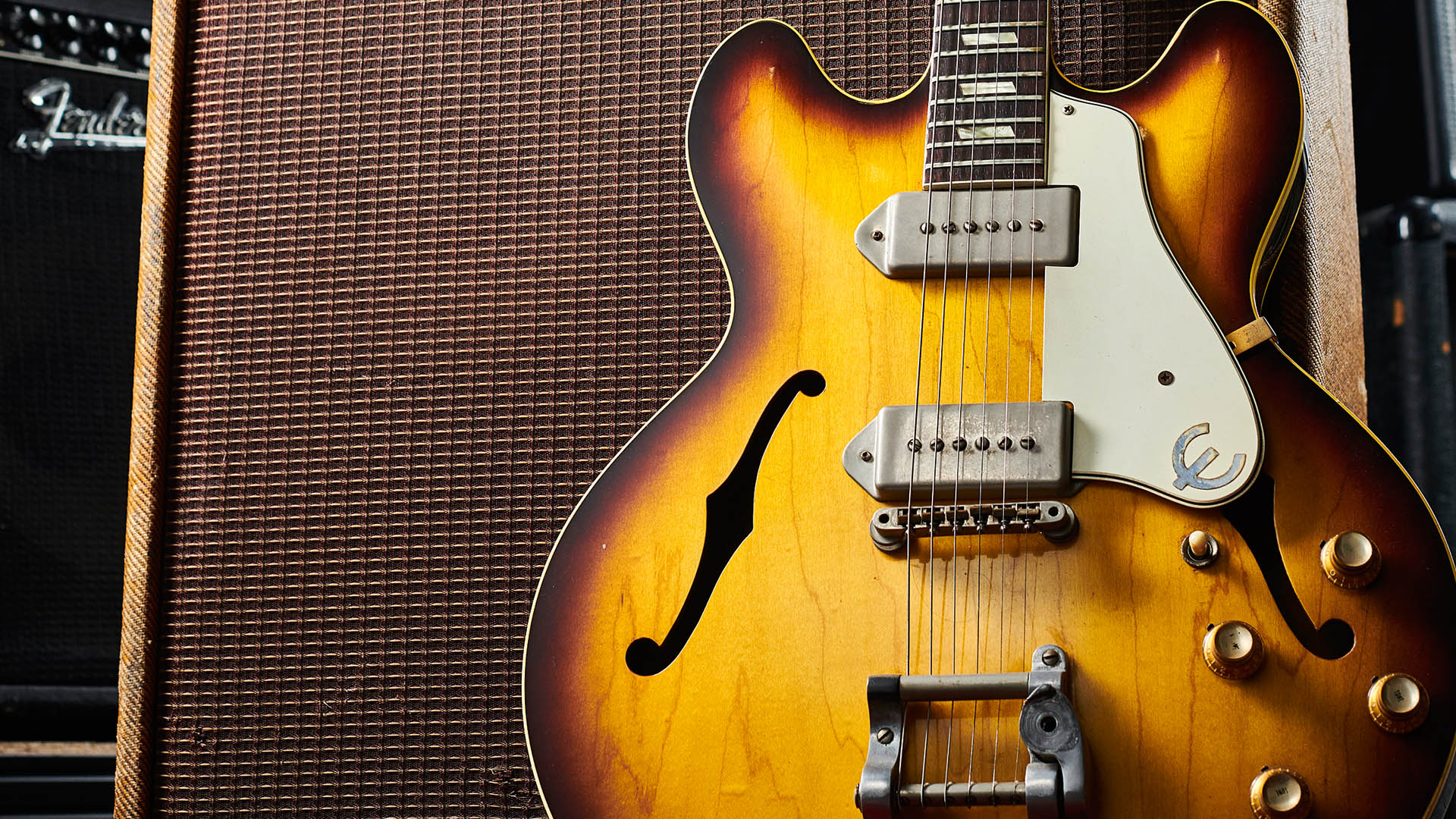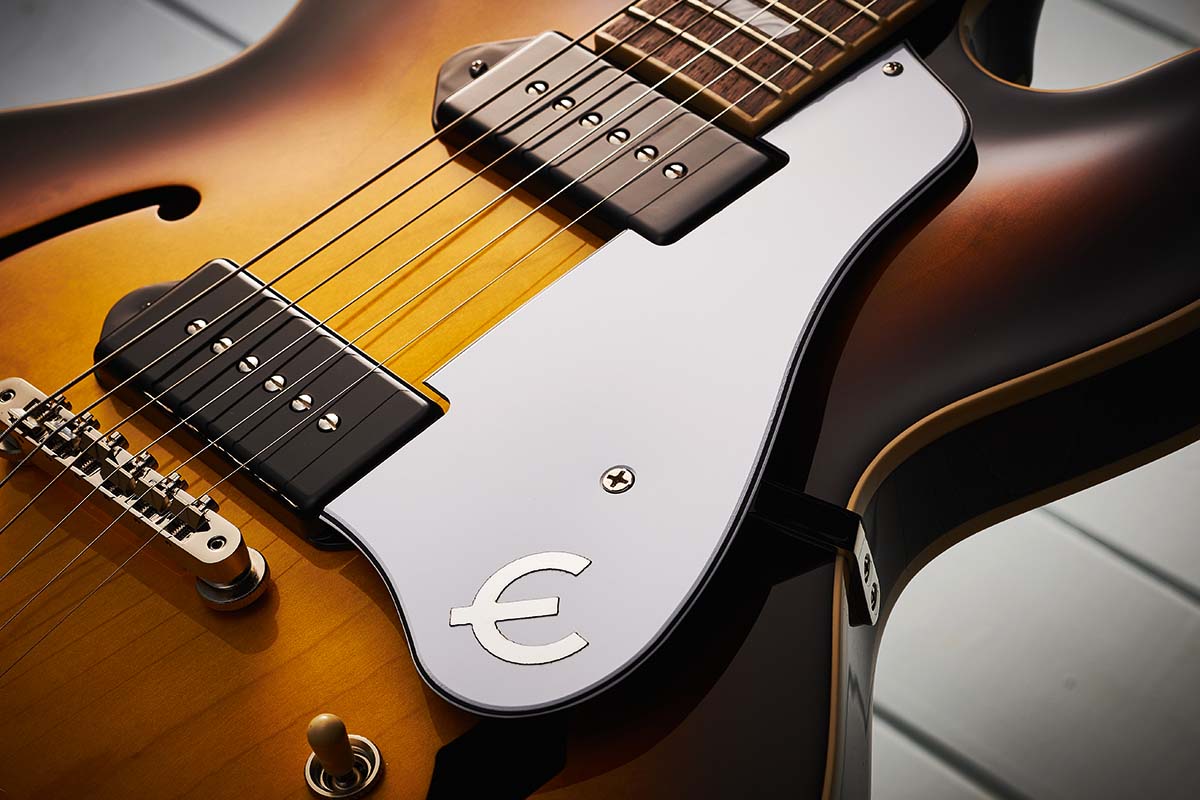“Deserves status as one of rock ’n’ roll’s most iconic electric guitars solely from its association with three of the four Beatles”: From the Beatles to the Stones, Johnny Marr and Radiohead, why everyone loves the Epiphone Casino
It was the sound of the British Invasion, of Lennon’s Revolution, and it brings us jangle and bite in equal measure. We pay tribute to the E230TD/TDV’s golden years

The Epiphone Casino deserves status as one of rock ’n’ roll’s most iconic electric guitars solely from its association with three of the four Beatles (John, Paul and George) who all often used a Casino to record timeless rhythms, riffs and solos.
Notable examples include McCartney’s Taxman guitar solo (recorded with a Casino plugged into a Fender Bassman), Lennon’s piercing distorted tones on Revolution and Lennon and McCartney’s parts on the three-way solo showdown on The End.
One may take a quick glance at the Casino and ask, “Isn’t it just a 335-style guitar with single-coil P90 pickups instead of humbuckers?” Au contraire, mon frère! There is much more of a difference than that.
During 1961 when the Casino model made its debut, Epiphone guitars were built in Gibson’s Kalamazoo, Michigan, factory. The Casino was based upon the design of the Gibson ES-330, which featured a fully hollow (not semi-hollow) thinline body design, dual P-90 pickups and a 22-fret neck that joined the body at the 16th fret. The Casino was basically identical to the ES-330 with the exception of a few cosmetic elements like the headstock shape.
However, whereas the Gibson version eventually became available with a neck that joined the body at the 19th fret like its big brother 335/345/355 models, the Casino always retained its 16th fret junction.

This neck design may have inhibited access to the uppermost frets, but the fact that more of the neck was within the body’s resonant chamber along with the placement of the neck pickup and (particularly) the bridge pickup closer to the center of the body provided fatter, more lively tone with prominent honking midrange. The Casino can also provide sparkling clean tones that resemble an acoustic’s jingle-jangle.
The Epiphone Casino was initially discontinued in 1970 when the Gibson factory stopped making Epiphone guitars. The brand’s production was moved to the Matsumoku factory in Japan, which revived the Casino in 1975 after a five-year hiatus.
Get The Pick Newsletter
All the latest guitar news, interviews, lessons, reviews, deals and more, direct to your inbox!
Over the years the Casino has gone in and out of production, including a Japanese domestic-only run from 1987 to 1995, but it has remained available in the U.S. market continuously since 2005.
In addition to the standard model with trapeze, Bigsby or Tremotone Vibrola tailpieces, Epiphone has offered a variety of artist signature models over the years, including John Lennon, Gary Clark Jr. and the flashy Dwight Yoakam “Dwight Trash” Elitist models.
The Beatles played a major role in inciting gear lust for the Casino during the mid ’60s, but the model was also seen in the hands of numerous other British Invasion players like Keith Richards and Brian Jones of the Rolling Stones and Dave Davies of the Kinks. Modern British mop top rockers like Noel Gallagher, Paul Weller and Johnny Marr have also played Casinos, as have American Beatles-inspired roots rockers like Tom Petty and Jeff Tweedy.
With the exception of perhaps the heaviest metal, the Casino is a versatile guitar ideal for almost any style of music, particularly the blues, funk and ’60s/’70s-style rock. Other notable Casino fans include Billy Corgan, the Edge, Richard Fortus, Josh Homme, Richard Lloyd, John Mayer, Leo Nocentelli, Ed O’Brien and Thom Yorke of Radiohead, Marc Ribot and Duke Robillard.
Chris is the co-author of Eruption - Conversations with Eddie Van Halen. He is a 40-year music industry veteran who started at Boardwalk Entertainment (Joan Jett, Night Ranger) and Roland US before becoming a guitar journalist in 1991. He has interviewed more than 600 artists, written more than 1,400 product reviews and contributed to Jeff Beck’s Beck 01: Hot Rods and Rock & Roll and Eric Clapton’s Six String Stories.
You must confirm your public display name before commenting
Please logout and then login again, you will then be prompted to enter your display name.
“What blew me away was that everyone wanted the curly maple top. People were calling, saying, ‘I’ve got to have the bird inlays’”: Paul Reed Smith on raising the Standard 24, finally cracking the noise-free guitar and why John Sykes is a tone hero
“It combines unique aesthetics with modern playability and impressive tone, creating a Firebird unlike any I’ve had the pleasure of playing before”: Gibson Firebird Platypus review




![[from left] George Harrison with his Gretsch Country Gentleman, Norman Harris of Norman's Rare Guitars holds a gold-top Les Paul, John Fogerty with his legendary 1969 Rickenbacker](https://cdn.mos.cms.futurecdn.net/TuH3nuhn9etqjdn5sy4ntW.jpg)







